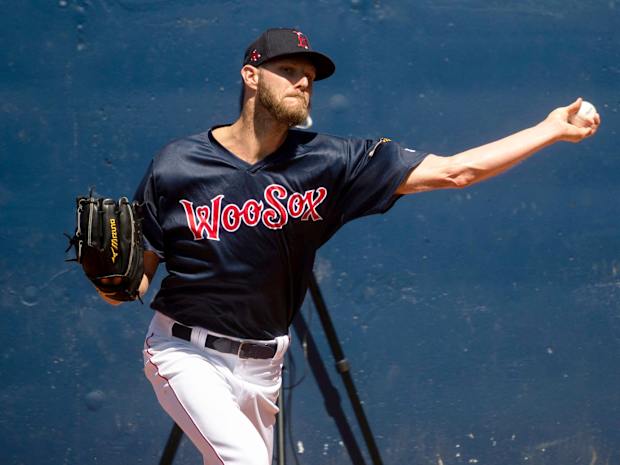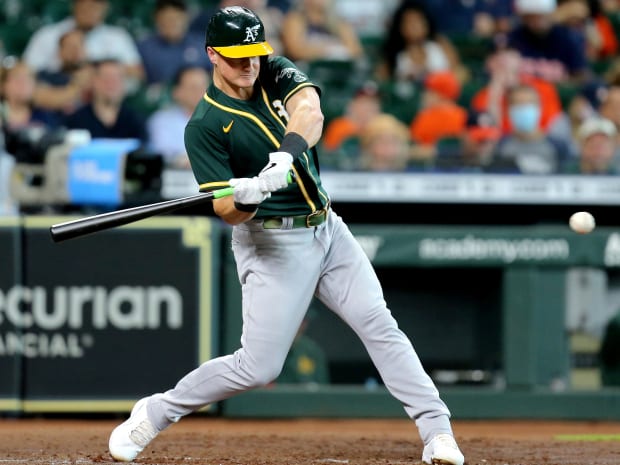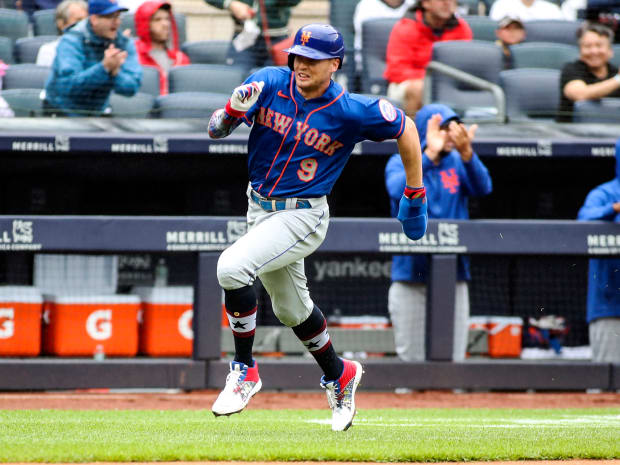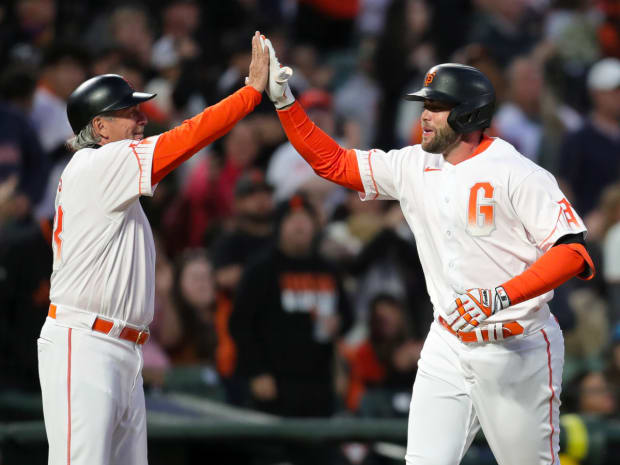Let's forecast the players who will define how the next two and a half months shake out.
Welcome to The Opener, where every weekday morning you’ll get a fresh, topical column to start your day from one of SI.com’s MLB writers.
Nearly two-thirds of the league are within six games of a playoff spot as we begin the second half of the season. That sets us up for plenty of intrigue ahead of the July 30 trade deadline. Beyond that, the races for division titles look to be tight all the way to the finish line.
None of the six teams currently in first place won its division in 2020, illustrating just how fleeting success can be. The stretch run starts Thursday night with the Yankees hosting the Red Sox—the other 28 teams play Friday—so now is as good a time as ever to forecast the division races and highlight the key x-factor in each that will define how the next two and a half months shake out.
With so many teams still in contention, there will obviously be a multitude of factors in determining who will emerge atop each division come October. The aim here is to pinpoint the most important one that will carry more weight than the rest of the competition. The only caveat is that I’ll refrain from playing armchair general manager. A key trade or three will certainly swing postseason odds over the next couple of weeks, but we'll save the trade deadline predictions for another day.

American League
East: Red Sox pitching
Boston has seen its pitching staff do something of a Jekyll-and-Hyde performance so far this season, so I’m lumping the whole group together. In April and May, the Red Sox ranked third in the majors in pitching fWAR (9.1) with a 3.46 FIP. Since the start of June, though, the staff has posted a 4.22 ERA and 4.43 FIP. The group’s home run rate has doubled over that span, with basically every starting pitcher aside from Nathan Eovaldi faltering.
The bullpen has performed well, but none of Boston’s starting pitchers has much of a recent track record in logging a ton of innings, so fatigue must have been a concern coming into the season. A reinforcement or two is a near certainty—Chris Sale’s eventual return inches closer and closer by the day—but the current group of starters will need to perform better if the Red Sox are to hold off the Rays, Blue Jays and Yankees.
Central: Cleveland SP Triston McKenzie
Finding an x-factor that will determine the AL Central is difficult when the White Sox stand head and shoulders above the competition. If Cleveland is to make this race interesting—and it's the only club with any shot at doing so—then the starting pitching must at least tread water until the currently injured big guns (Shane Bieber, Zach Plesac and Aaron Civale) return. Of the pitchers that remain standing, McKenzie is the one most able to stem the tide.
McKenzie was regarded as one of the top pitching prospects in baseball heading into 2020, and he backed up the hype in his first taste of the big leagues. Last season, he posted a 3.24 ERA and struck out 42 batters over 33 1/3 innings. The Cleveland organization consistently churns out good young pitchers, with McKenzie emerging as next in line.
But then he got off to a rocky start in 2021 and struggled with his command, prompting two demotions to the minors. Now back in the majors for a third time this year, he was superb in his most recent outing, striking out nine over seven one-hit innings against Kansas City. If he and the rest of Cleveland’s starters can keep the team within striking distance until the cavalry arrives, this race could have a semblance of drama. Otherwise, a sell-off at the trade deadline could (and should) be imminent.

West: A’s 3B Matt Chapman
Though the Mariners and Angels are still within shouting distance of a wild-card spot, Oakland is the only real threat to the Astros for the division race. The A’s have gotten contributions from up and down the roster, though Chapman—arguably the team’s most talented everyday player—has been slow to turn things on. Following a brutal first two months, the two-time Gold Glove Award winner has found a bit of a rhythm in the batter’s box, batting .260/.324/.450 since the start of June. That’s much closer to his career norms and represents a severe upgrade from the hitter who slogged through April and May.
The precise cause of Chapman’s turnaround is difficult to pin down, but the underlying numbers lend some assurance that his success is not simply luck turning for the better. From 2018 to ’20, Chapman had an average exit velocity around 93 miles per hour. That mark hovered around the high-80s for most of this season, though has been back to the low-to-mid-90s over the past month. The A’s have been successful without Chapman being his typical self, but this is still one of the best position players in the league when he’s right. If he maintains his usual form over the next two and a half months, that’s better than any trade deadline acquisition the A’s could hope for.

National League
East: Mets CF Brandon Nimmo
The NL East is the leader in the clubhouse for the weirdest division race of the season. The last-place Marlins have a higher run differential (+17) than the first-place Mets (+9), so the margin for error separating all five of these teams is razor-thin. New York has maintained its perch atop the standings in spite of its stagnant offense. A healthy and productive Nimmo will play a key role in the team's ability to stay there.
The Mets rank 19th in the league in on-base percentage (.310) and 29th in runs scored, and Nimmo is the team’s best at getting to first base. He’s been excellent since coming off the injured list, batting .316/.366/.421 in 10 games. Francisco Lindor’s continued hot streak is obviously paramount to New York’s run-scoring efforts as well, but having both guys produce at the top of the lineup will determine the Mets’ offensive ceiling. Paired with the team’s elite pitching and defense, even just a mediocre offense would make the Mets real title contenders. Nimmo’s presence in the leadoff spot gives the club a better shot to get there in the first year under new owner Steve Cohen.
Central: Reds SPs Luis Castillo and Sonny Gray
Given the free fall of the Cubs and Cardinals, the Reds appear to be the only club with a realistic shot at running down Milwaukee. To do so, a continued resurgence from the club’s most talented starting pitchers is a must. Castillo owned an ERA north of 7.00 through his first 11 starts, though his underlying numbers were much more encouraging. He’s finally put together strong results, posting a 1.97 ERA in eight games since the start of June with just two home runs allowed in 200 batters faced. Gray, meanwhile, missed about a month with a strained rib cage but has looked stellar in his two outings since returning.

West: Giants 1B Darin Ruf
The Giants’s revival tour has sprung from the resurgent seasons of veterans Buster Posey, Brandon Crawford and Brandon Belt, along with a deep cast of hitters enjoying breakthrough seasons. San Francisco leads the majors with 132 home runs, though only one hitter (Crawford) has more than 12. Among those breakout stars is the 34-year-old Ruf, whose path to big league success included parts of nine seasons in the minors and three years in the KBO.
Ruf has played mostly first base as a fill-in for the injured Belt, who isn’t that close to returning from the IL. Among players with as many plate appearances, he’s been San Francisco’s second-best hitter on a rate basis, batting .267/.399/.560 in 59 games—good for a 159 wRC+. The fight for the NL West is a real battle royal among the Giants, Dodgers and Padres, with plenty of stars that will undoubtedly swing the race in any direction. Ruf might not singlehandedly lead the Giants to the title, but he’s exactly the type of player who could tip the scales as we head down to the wire.
More MLB Coverage:
• Second-Half Mysteries: Inside MLB's Thrilling Stretch Run
• In the Year of Ohtani, MLB’s Stars Are Celebrating the Greatest of Them All
• How Should the Braves Move Forward Without Ronald Acuña Jr.?
• Three Big Questions Ahead of the MLB Trade Deadline